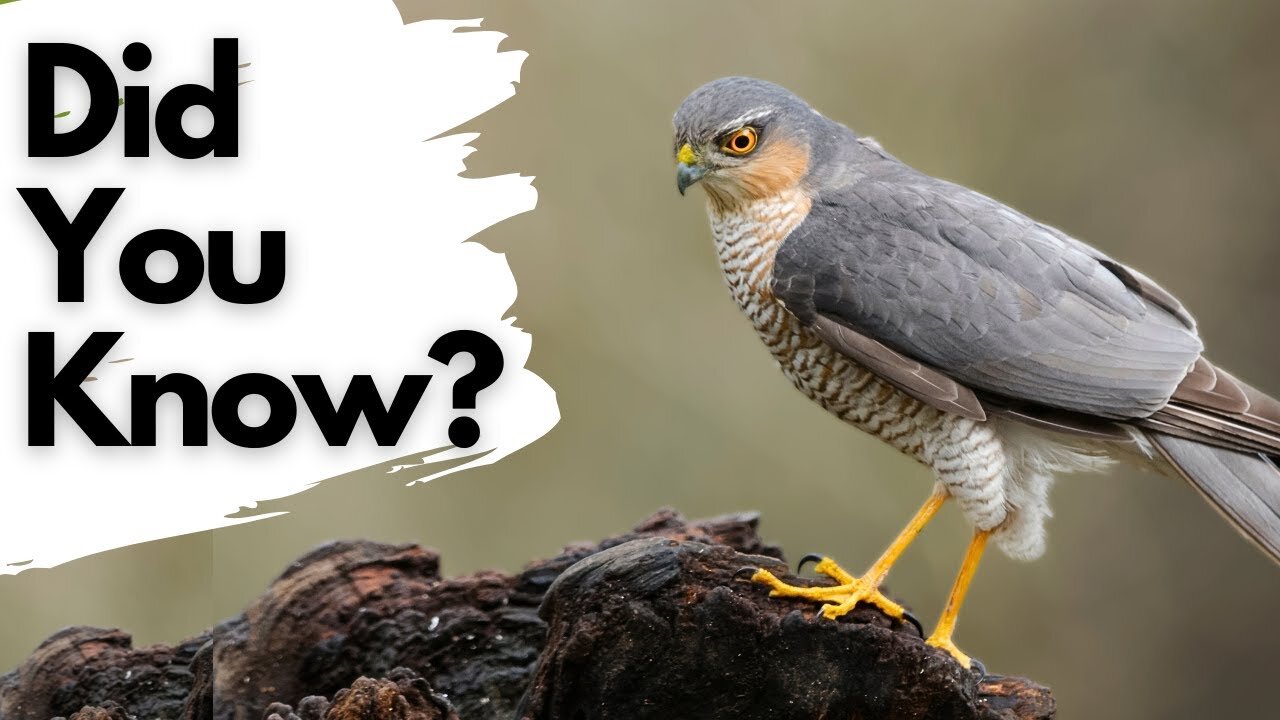Premium Only Content

Things you need to know about SPARROWHAWKS!
Sparrowhawks are small to medium-sized birds of prey belonging to the genus Accipiter. These birds are known for their agility and speed, making them formidable hunters in wooded areas. Here are some key things you need to know about Sparrowhawks:
Appearance: Sparrowhawks typically have short, broad wings and long tails, which aid in their maneuverability through dense vegetation. They often exhibit sexual dimorphism, with females being larger than males. Their plumage is predominantly gray or brown, helping them blend into their surroundings.
Habitat: Sparrowhawks are commonly found in woodlands, forests, and urban areas across much of the Northern Hemisphere. They prefer habitats with dense vegetation, which provides cover for stalking and ambushing their prey.
Diet: These raptors primarily feed on small birds, such as sparrows, finches, and tits, hence their name. They are skilled hunters, using surprise attacks and sharp talons to catch their prey mid-flight. Occasionally, they may also prey on small mammals, insects, and even bats.
Behavior: Sparrowhawks are solitary hunters, typically patrolling their territories and hunting areas alone. They rely on stealth and surprise to catch their prey, often darting through dense vegetation to ambush unsuspecting birds.
Reproduction: During the breeding season, Sparrowhawks build nests in trees, usually constructed of twigs, moss, and other plant material. Females lay a clutch of eggs, which are incubated for around 4 weeks. Both parents participate in feeding and caring for the young until they are ready to fledge.
Conservation: While Sparrowhawks are not considered globally threatened, certain populations may face challenges due to habitat loss and human disturbance. Conservation efforts often focus on maintaining suitable woodland habitats and minimizing human impact on nesting sites.
Interactions with Humans: Sparrowhawks occasionally attract attention from birdwatchers due to their striking appearance and hunting behavior. However, they may also come into conflict with humans, particularly those who keep domesticated birds such as pigeons and poultry.
#Sparrowhawks #BirdsOfPrey #Wildlife #Habitat #Predators #Conservation #Nature #BirdWatching
-
 3:12:08
3:12:08
MyronGainesX
5 hours ago $23.63 earnedDan Bongino Named As Deputy Director Of FBI And CPAC Recap
64.2K18 -

vivafrei
5 hours agoBarnes Live from Seattle - Defending Benshoof in a Case that is CRAY CRAY!
78K24 -
 2:12:12
2:12:12
Robert Gouveia
5 hours agoLiberals EXPLODE over Elon's Email; Lawsuits FLY; Sanctions?? Congrats Dan!
48.3K20 -
 1:33:36
1:33:36
Redacted News
6 hours agoBREAKING! PUTIN LAUNCHES MASSIVE OFFENSIVE IN UKRAINE AS EUROPEAN LEADERS PUSH FOR MORE WAR
127K209 -
 44:39
44:39
Kimberly Guilfoyle
6 hours agoBetter Days Ahead for the FBI, Live with Asm Bill Essayli & John Koufos | Ep.199
82.3K24 -
 1:40:29
1:40:29
In The Litter Box w/ Jewels & Catturd
1 day agoWhat Did You Do Last Week? | In the Litter Box w/ Jewels & Catturd – Ep. 748 – 2/24/2025
127K36 -
 23:34
23:34
Stephen Gardner
6 hours ago🔥CNN PANICS over $5000 DOGE Dividend | Trump Orders bigger Audits
77.3K130 -
 1:53:54
1:53:54
The White House
8 hours agoPresident Trump Holds a Press Conference with President Emmanuel Macron of France
89.6K82 -
 1:48:31
1:48:31
The Officer Tatum
8 hours agoLIVE MSNBC DROPS HAMMER On Joy Reid as STAFFERS PANIC! + More Ep 67
122K79 -
 59:36
59:36
Chad Prather
7 hours agoTRUMP TAPS DAN BONGINO TO HELP LEAD FBI - IT’S OVER FOR THE DEEP STATE!
90.1K65